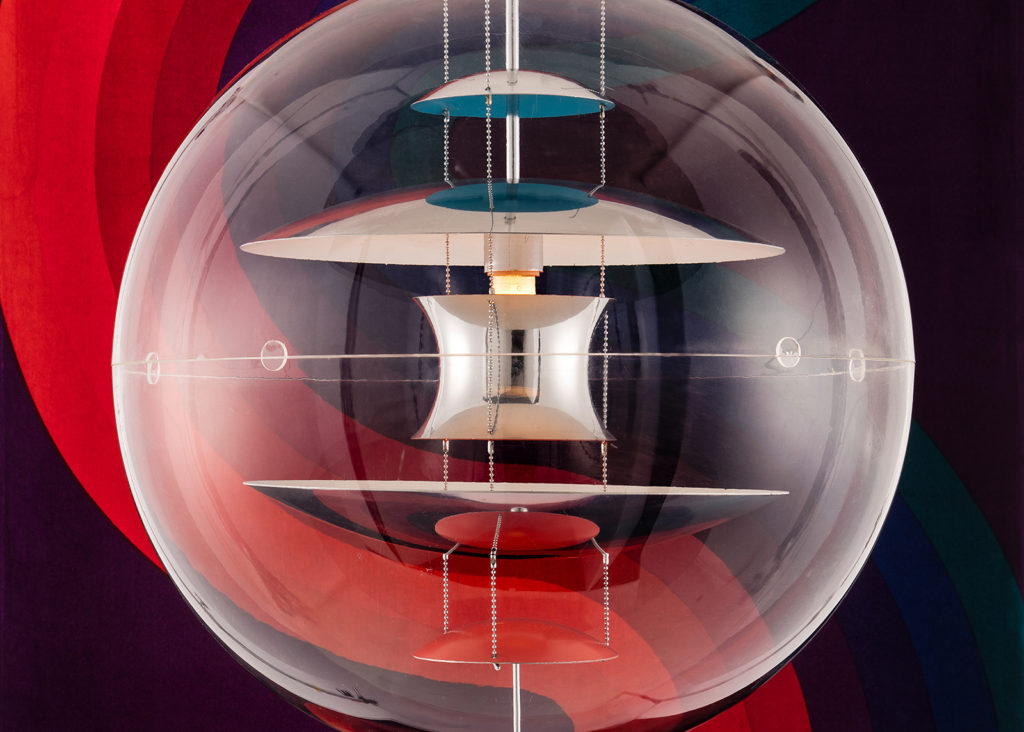
Verner Panton Exhibit at R & Co. in Tribeca—Extended Until Jan. 27
Thanks to the careful collecting of New York City gallery R & Company, you can now see a diverse array of lighting and furniture by Danish design dynamo Verner Panton. The Verner Panton exhibit displays Panton’s work “in an immersive environment as he originally conceived.” Experience the aesthetic synthetic at 64 White Street in Tribeca until Jan. 27, 2022.
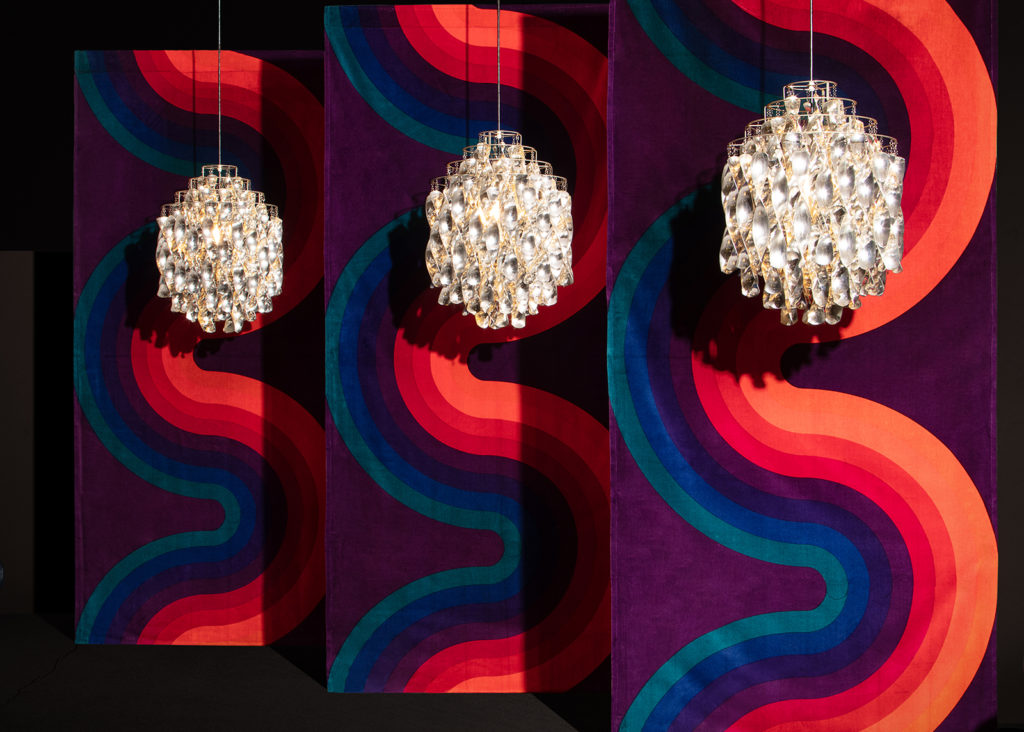
Textiles and pendants on view at Verner Panton exhibition. Photo courtesy of R & Company.
Rare & Iconic Panton Lamps on View
The exhibit includes rare and iconic lamps, as well as furniture and textiles. R & Company explained its development process: “The group of nearly 50 objects that will be presented in Verner Panton were collected over the course of three years.” Given the difficulty of finding original Panton pieces, the exhibit is a must-see.
Panton, who once worked as an assistant to Arne Jacobsen, developed a wide range of lamps—many of which remain icons to this day (Panthella, anyone?). His lighting designs were “guided by the philosophy that the lightbulb should be obscured to emphasize the experience of the form, material, and emanating light,” according to R & Company. This makes a lot of sense, given Panton’s careful study of color (more on this later). Besides the inimitable Panthella table lamp, the exhibit features several ball lamps in different plastic colors.
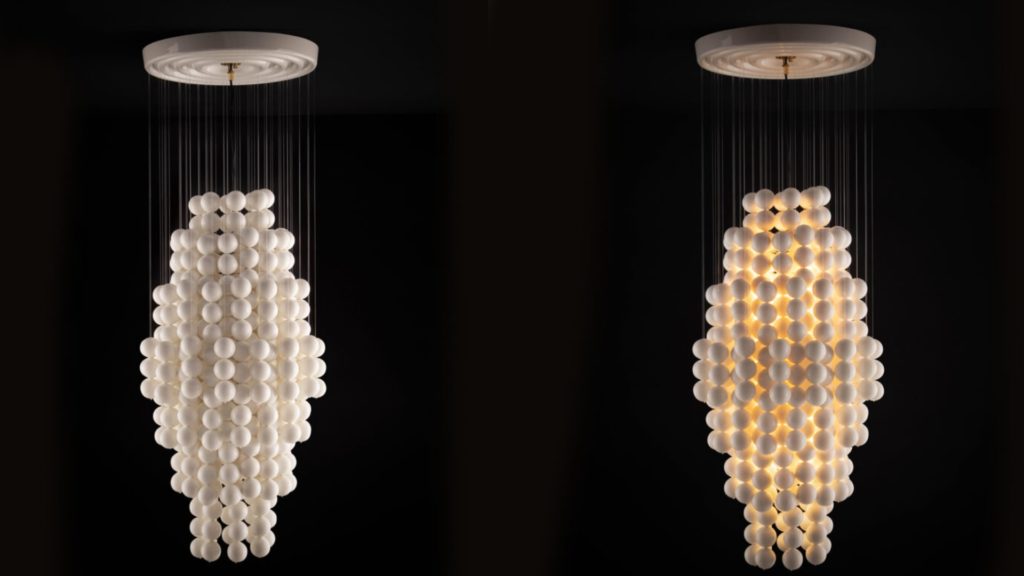
Ball Lamps by Verner Panton. Photo courtesy of R & Company.
Using Color to Evoke Mood
Panton’s lamps manipulated color through their chosen materials, evoking a mood based on the quality and cast of the light. Panton may have been so successful as a lighting designer because he appreciated that light is dependent on color—and Panton studied color carefully. “There isn’t a designer that works in color that hasn’t been influenced by Panton, whether consciously or subconsciously,” said Zesty Meyers, principal at R & Company.
“Colours are a subjective, physical perception—they really don’t exist at all.”
– Verner Panton
In the 60s and 70s, Panton explored color through his designs. He brought color to life in holistic environments, often created for international furniture fairs. In 1970, he presented Visiona II at IMM Cologne, a space-age tableau replete with organic plastic forms, including the famous Panton Chair (a favorite of architect Zaha Hadid). Panton’s eponymous chair—a cantilevered design built from a single piece of plastic—reinvented the Scandinavian art of bent wood in a futuristic material.

Design by Verner Panton, www.verner-panton.com, ©Verner Panton Design AG
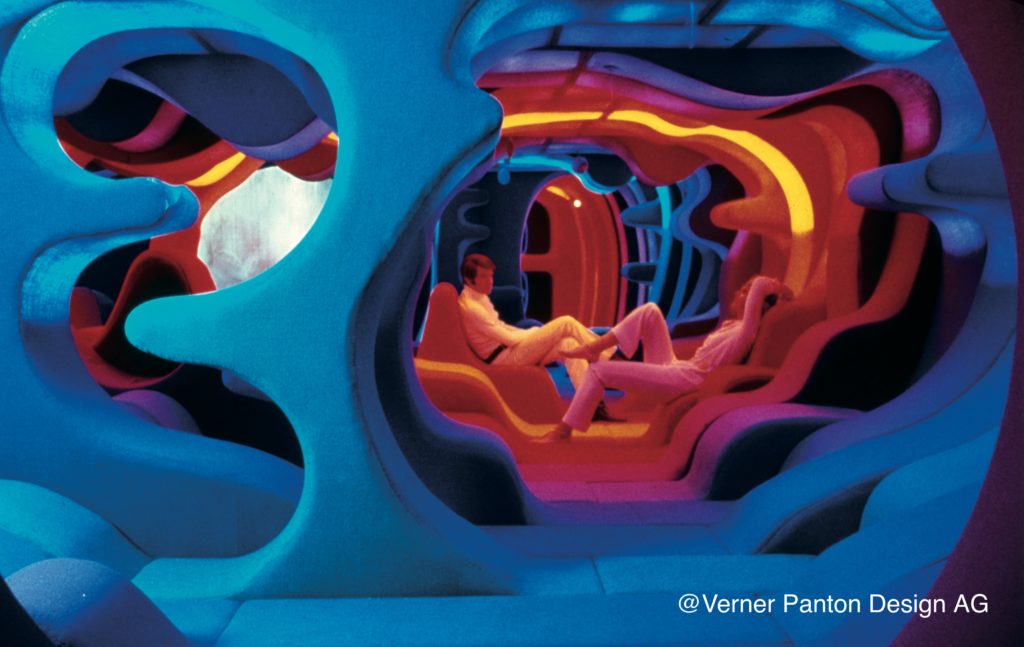
Environment created for Visiona II exhibition in 1970. Design by Verner Panton, www.verner-panton.com, ©Verner Panton Design AG
Sensorial Environments
Verner Panton pays homage to Panton’s immersive environments. “With this exhibition, we are creating a space of escape and respite—a place where the imagination can wander, even if briefly, away from the stresses outside. This is very much in alignment with Panton’s vision, to produce objects and environments to excite, inspire, and compel people,” said Evan Snyderman, principal at R & Company.
Interestingly, both of R & Company’s Panton exhibitions have coincided with world-changing events. In October 2001, their first Panton show opened shortly after 9/11. This current show, which opened in 2021, happens during a historic pandemic. The all-encompassing nature of the gallery’s Panton presentations are a happy accident then and now. “Strangely, we find ourselves again in a difficult moment and we’re thrilled to offer this exhibition as a place for people to come and be present and connect with these extraordinary works,” Snyderman said.
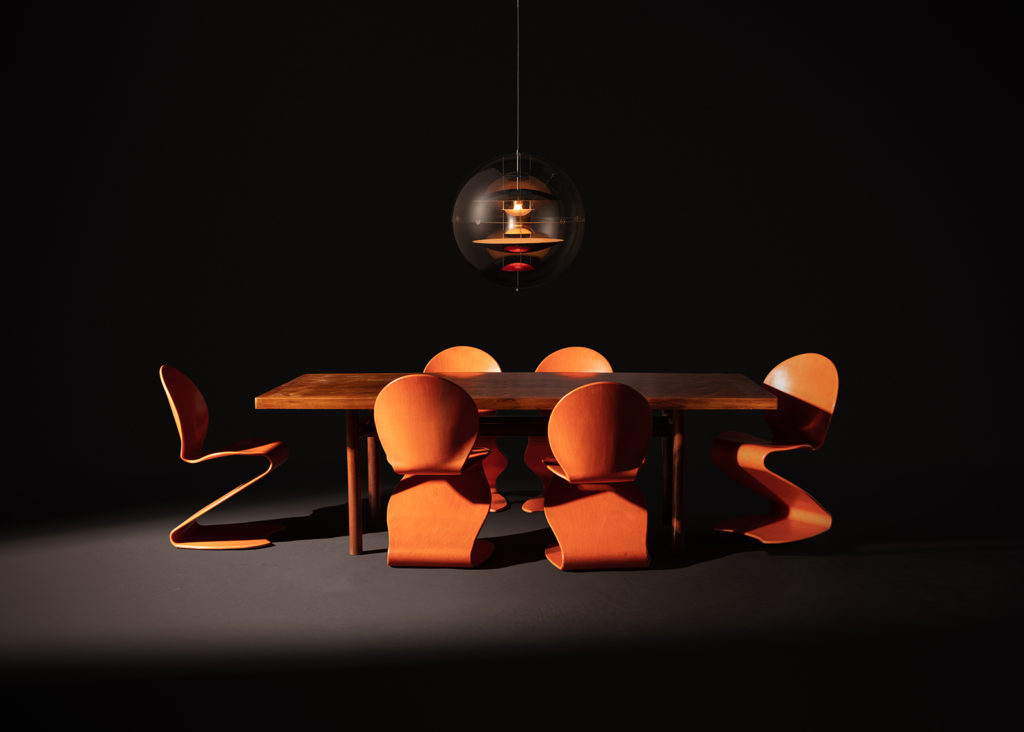
Original S-Chairs designed by Verner Panton. Photo courtesy of R & Company.
For anyone interested in Panton’s use of color, check out his book Lidt om Farver (Notes on Colour). Vitra, the Swiss manufacturer who continues to produce Panton designs, offers a great excerpt of Panton’s book on its website.
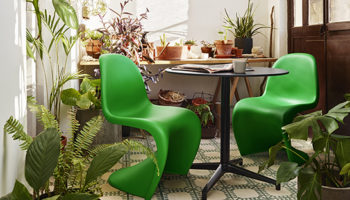
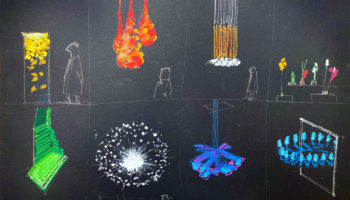
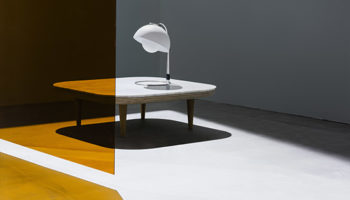

Leave a Reply